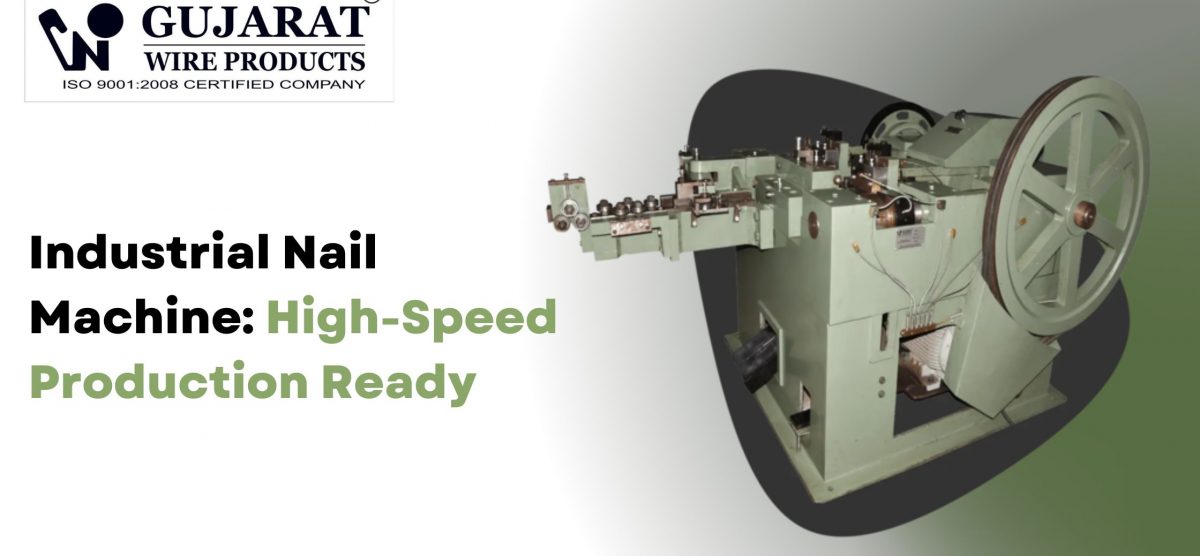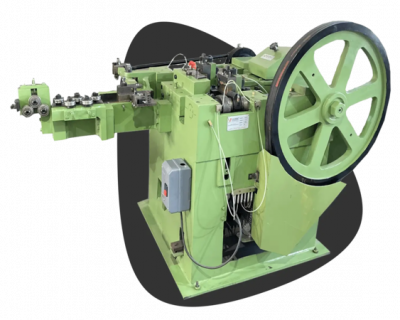Blog

Industrial Nail Machine: High-Speed Production Ready
Introduction
Every construction project, furniture assembly, and packaging operation depends on a single fastener: the nail. But here’s what most buyers overlook—production speed isn’t just about volume. It’s about maintaining precision at 600 nails per minute while your competitors struggle at half that rate. A high-speed industrial nail machine transforms wire coils into finished, market-ready nails in seconds, not minutes. This process determines your profit margin, delivery timelines, and market share. The difference between outdated equipment and modern automation is the gap between surviving and dominating your sector.
This guide walks through what makes a nail machine production-ready, the technical features that matter, the real cost of speed, and how to avoid the mistakes that drain efficiency. By the end, the path to scalable nail manufacturing becomes clear.
The Production Speed Problem
Most manufacturers believe faster machines automatically mean better output. That’s incorrect. Speed without precision creates waste. High-speed nail machines process 400 to 800 nails per minute depending on nail type and wire diameter. But raw speed means nothing if 15% of your batch has defective caps or uneven lengths.
The real challenge is maintaining dimensional accuracy while running at peak velocity. Modern machines use advanced cam systems and plunger mechanisms to minimize vibration and impact during the heading process. This keeps noise below 85 decibels and ensures each nail meets specification.
Wire feeding speed must sync perfectly with the cutting and heading operations. A delay of even 0.2 seconds per cycle adds up to thousands of lost units daily.
What Separates Production-Ready Machines?
Production-ready means the equipment runs 16-hour shifts without manual intervention. Automatic lubrication systems prevent bearing wear during extended operations. Enclosed frames keep dust out of critical moving parts. Fault detection sensors stop production the moment wire feed jams or dies misalign.
These aren’t luxury features. They’re the baseline for avoiding downtime costs that exceed ₹50,000 per lost production day.
Key Features of High-Speed Nail Machines
Precision Die and Cutter Systems
The nail die shapes the head, and the cutter forms the point. Both components must maintain tolerances within 0.05mm across millions of cycles. Tungsten carbide dies last longer under high-speed friction and heat, reducing replacement frequency by 40%.
Adjustable die positioning allows quick changeovers between nail sizes without recalibrating the entire machine. This flexibility matters when serving multiple industries with varying nail specifications.
Automatic Wire Straightening and Feeding
Raw steel wire arrives coiled and must be straightened before entering the cutting stage. Multi-roller straightening units remove curvature while maintaining wire strength. Synchronized feeding mechanisms ensure consistent wire entry angles, which directly affects nail head symmetry.
Variable frequency drives control motor speed based on wire diameter and nail type. This reduces energy consumption by 20-30% compared to fixed-speed motors.
Safety and Monitoring Systems
Overload protection shuts down operations before excessive force damages dies or gears. Low lubrication alarms prevent catastrophic bearing failures. Wire break sensors stop production immediately, avoiding damage to cutting blades and dies.
Closed construction frames protect operators from flying debris and reduce workplace injury risk. Emergency stop buttons positioned at three machine points allow instant shutdown from any access angle.
Why Speed Translates to Profit?
A machine producing 600 nails per minute completes 36,000 units per hour. Over a 16-hour shift, that’s 576,000 nails. At a market rate of ₹8 per kilogram for common wire nails, daily revenue potential scales dramatically with speed increases.
But the real advantage comes from labor cost reduction. High-speed automation requires one operator to supervise multiple machines instead of manual monitoring per unit. This cuts labor expenses by 60% while increasing output consistency.
Energy efficiency matters equally. Frequency-controlled motors draw power proportional to load, unlike older models running at constant maximum draw. Annual electricity savings range between ₹1.2 to ₹2.5 lakh for mid-sized operations.
Waste Reduction Through Precision
Defect rates below 2% are standard with calibrated high-speed machines. Every percentage point of waste reduction directly improves material ROI. At scale, this difference shifts annual profitability by lakhs.
Common Challenges Solved
Inconsistent Nail Caps
Nail caps appearing uneven or off-center indicate die misalignment or worn countersunk holes. Regular inspection of fixture heights and countersink wear prevents this issue. Annealing excessively hard wire before processing also improves cap formation.
Machine Downtime
Unplanned stoppages destroy production schedules. Automatic lubrication systems and closed frames reduce mechanical failures by 70%. Keeping spare dies and cutters on-site minimizes changeover delays.
Raw Material Variability
Different wire suppliers deliver varying hardness levels. Adaptive tensioning systems compensate for these inconsistencies, maintaining cut quality across batches.
FAQs
Q: Can one machine produce multiple nail sizes?
A: Yes. Adjustable dies and variable wire feeding allow quick transitions between 1-inch to 6-inch nails. Changeover time averages 15-20 minutes with proper tooling.
Q: What maintenance schedule ensures longevity?
A: Daily lubrication checks, weekly die inspections, and monthly gear alignment reviews keep machines running 10+ years. Replacing cutting blades every 500,000 cycles maintains precision.
Q: How do high-speed machines handle galvanized wire?
A: Galvanized and annealed wires process identically once tension settings adjust for coating thickness. No specialized equipment is needed.
Q: What’s the break-even point for upgrading to high-speed equipment?
A: Most operations recover investment within 18-24 months through increased output and reduced labor costs.
Conclusion
High-speed nail production is every factory’s need for competitive manufacturing. Machines that combine speed, precision, and reliability determine who leads and who exits the market.
Gujarat Wire Products engineers nail machines built for relentless production cycles. Our equipment handles variable inputs, runs extended shifts, and delivers consistent output at speeds that redefine industry benchmarks. Ready to scale your operation? Visitgujaratwireproducts.com or contact our team for a production consultation and ROI analysis.

